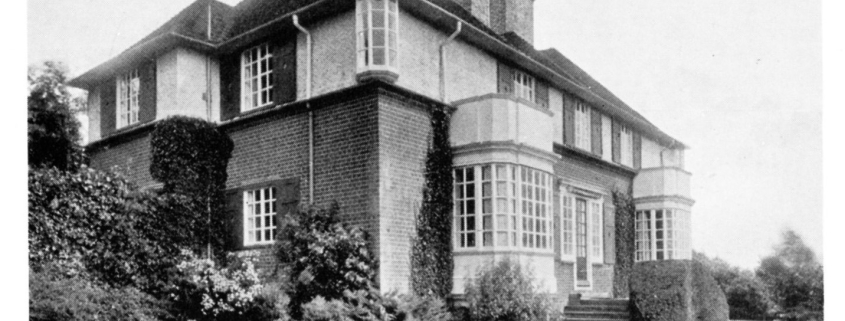Lutyens houses – a slice of quintessential British country living
Country houses, war memorials and public buildings are some of the finest examples in Britain are down to one man, Sir Edwin Landseer Lutyens.
As one of our most important architects, Lutyens (1869-1944) initially designed private houses in the Arts and Crafts style, before branching out to churches, memorials including the Cenotaph in Whitehall, and as part of the team shaping the newly built New Delhi.
Closer to home, Lutyens gave us some of our most beautiful country houses – including Suffolk’s own Brent Eleigh Hall – and over the years, the team at NJ Architects has been fortunate enough to have helped restore these interesting properties to their former glory. The team is currently working with the owners of two Lutyens properties, one in Suffolk and the other in Guildford, each with a very different brief.
In Suffolk, decades of neglect have eroded the historic fabric of the building, and the new ‘custodians’ want to re-establish the unique interior of the building as intended. In Guildford, the client is hoping to extend the building, providing further accommodation in a form that compliments the original. Internal changes include the removal of modern insertions, restoring Lutyens’ original layout.
“Lutyens was famed for adapting traditional architectural style to the needs of the era,” said Shaun Soanes, Partner at NJ Architects. “In the same way, sometimes these properties need to be updated to meet the needs of modern lifestyles, while maintaining the historic features. But we have also helped clients who seek to restore some of the original style and character, for example bringing the floor plans back to how they would have been.”
Shaun highlighted the fact that Lutyens was interested in the whole project – not just the structure of the building, but how it looked and felt inside too.
“Lutyens looked at the entire package for his clients – which included the interior design of the property, down to the furniture. The Arts and Crafts movement involved looking at the building in its entirety and creating something to fit the client’s lifestyle.”
Because of this, elements of note can be very varied and might include fibrous plaster, staircases and joinery, bookcases, cabinet work and fireplaces.
By nature, Lutyens houses are usually listed buildings, and are therefore protected. The Lutyens Trust is a charity dedicated to preserving and promoting the heritage of Lutyens’ work – it arranges tours of private houses for its members, as well as an annual study week at a Lutyens house, Goddards in Surrey.
The website – www.lutyenstrust.org.uk – is home to an archive of background information on Lutyens, lectures and news, including when Lutyens houses are spotted for sale.
Clive Aslet, Trustee at the Lutyens Trust said: “Our mission is to preserve Lutyens buildings and ensure they are enjoyed and appreciated by new generations of visitors, as they deserve.
“NJ Architects have done a wonderful job of restoring the original building faithfully while incorporating contemporary touches to ensure it thrives in the modern world. I think he would approve.”
Photo: from the book ‘House and Gardens by EL Lutyens’ by Weaver Lawrence, 1913.


 Bentinck House
Bentinck House


